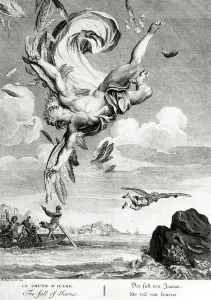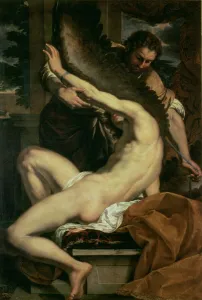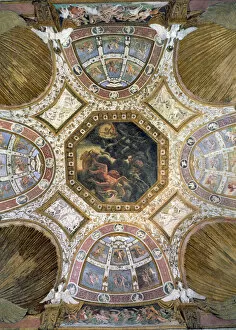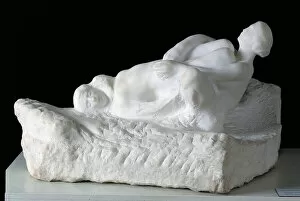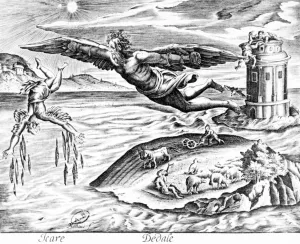Icare Collection
"Icarus: A Tragic Tale of Ambition and Consequences" In the realm of Greek mythology, Icarus stands as a symbol of both audacity and downfall
All Professionally Made to Order for Quick Shipping
"Icarus: A Tragic Tale of Ambition and Consequences" In the realm of Greek mythology, Icarus stands as a symbol of both audacity and downfall. From ancient engravings to modern sculptures, his story has been immortalized through various artistic interpretations. One such depiction is "The Fall of Icarus" from 1731, an engraving that captures the pivotal moment when Icarus's wings melt under the scorching sun. This tragic event serves as a reminder that excessive ambition can lead to catastrophic consequences. Another artwork titled "Icarius" portrays Diomedes wounding Aphrodite while attempting to recover the lifeless body of Aeneas. Here, we witness how even gods are not immune to suffering when they intervene in mortal affairs. "The Lament for Icarus" showcases a Naiad grieving over Icarus's demise using charcoal and chalk on paper. The delicate strokes convey her sorrowful lamentation for a young life cut short by recklessness. Daedalus and his ill-fated son also find their place in these artistic renditions. In "Daedalus escaping from Crete with his son, " we witness Daedalus' anguish as he witnesses his beloved child plummeting towards certain death. It serves as a poignant reminder that parental love cannot always protect us from our own choices. "The Fall of Icarus" painted in 1572 on slate depicts this tragedy with vivid oil colors, capturing the intensity of emotions surrounding this mythological tale. A sketch dating back to 1869 offers insight into an artist's interpretation during that era – highlighting Daedalus' struggle with guilt after losing his son due to their shared hubris. Within the Camera delle Aquile ceiling panel, surrounded by ornate designs, lies another representation showcasing Icarus' fall. This piece reminds us that even amidst grandeur and opulence, the consequences of our actions can be inescapable.

